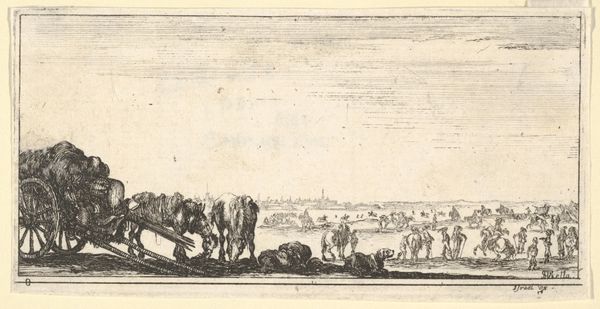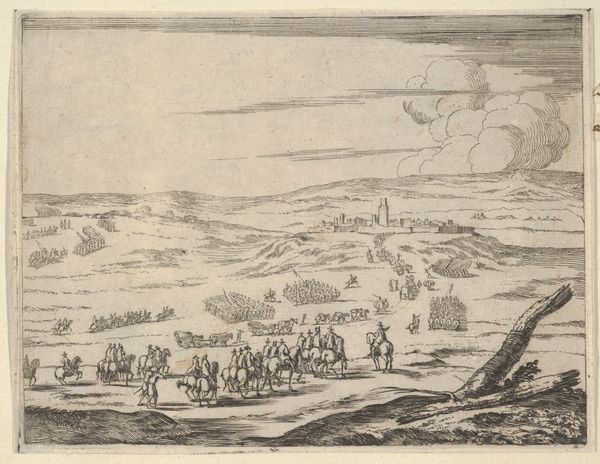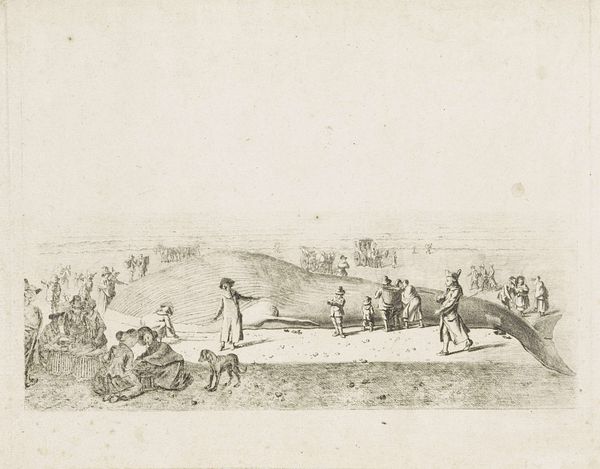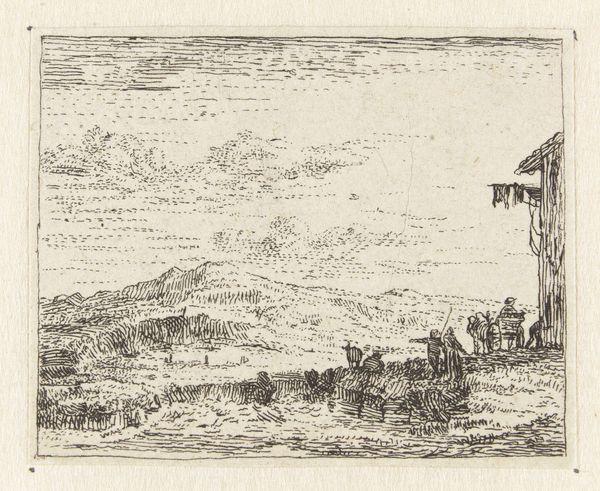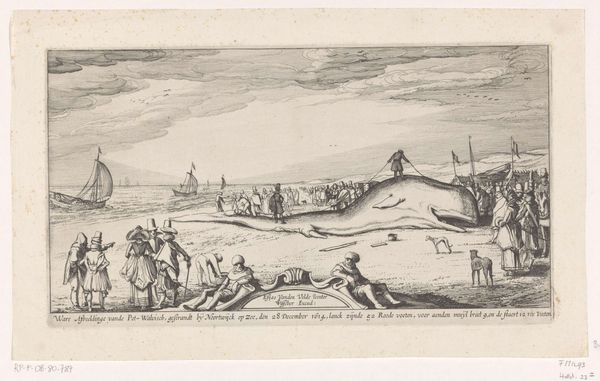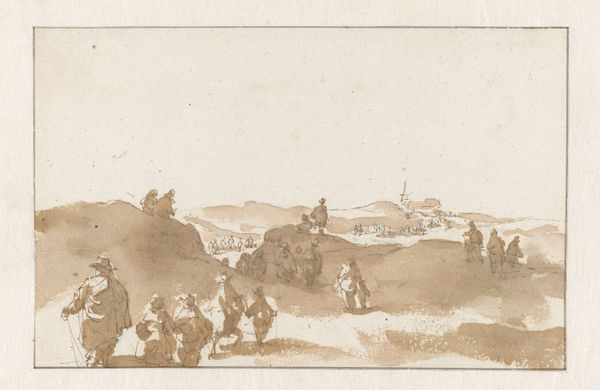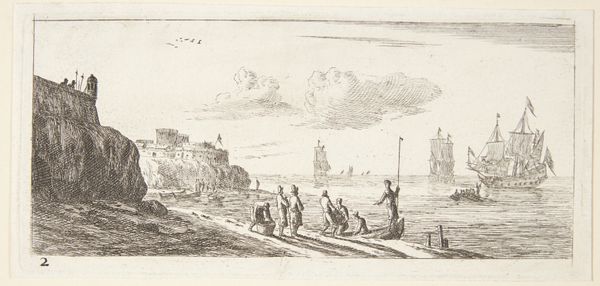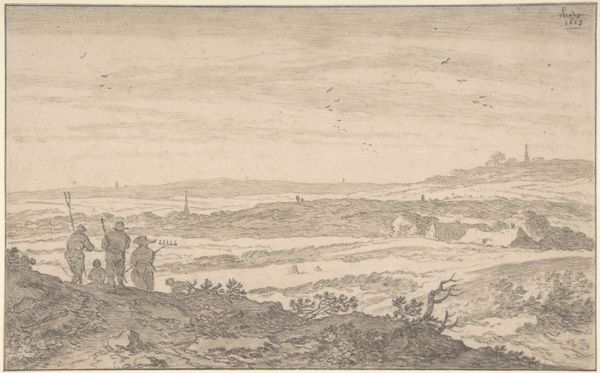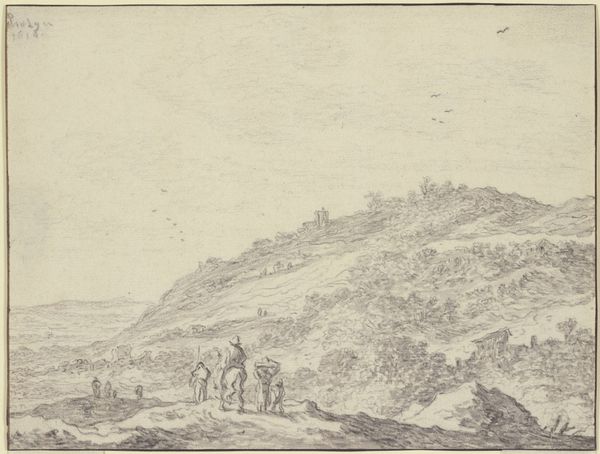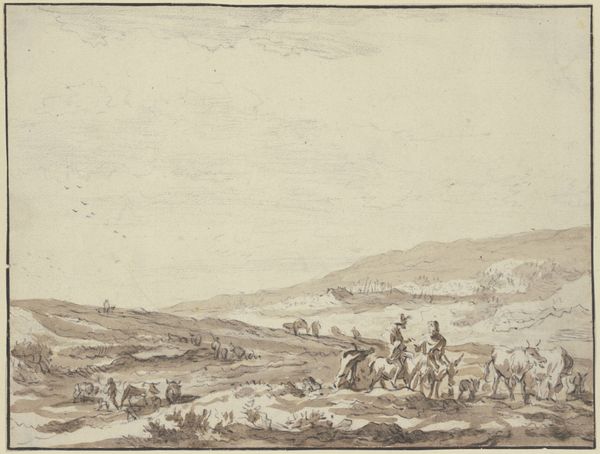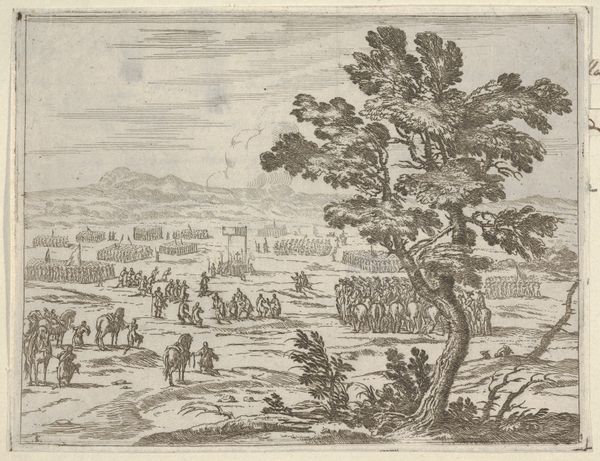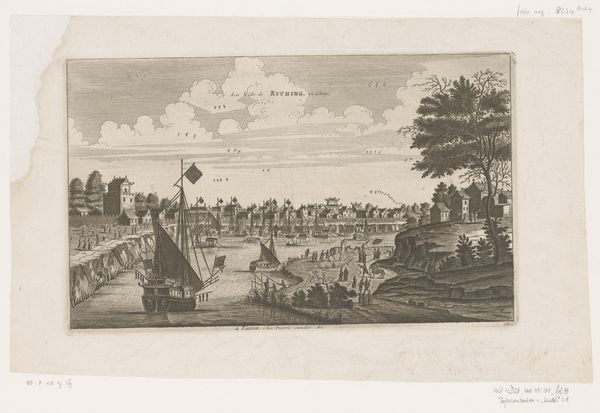
A procession of horse-drawn cannon carriages to left, horsemen in combat and a dead horse to right, battle on a bridge in center background, from 'Peace and War' (Divers desseins tant pour la paix que pour la guerre) 1636 - 1646
0:00
0:00
drawing, print
#
pencil drawn
#
landscape illustration sketch
#
drawing
#
amateur sketch
#
light pencil work
#
ink drawing
# print
#
pen sketch
#
pencil sketch
#
ink drawing experimentation
#
soldier
#
pen-ink sketch
#
horse
#
pencil work
Dimensions: Sheet (trimmed to plate): 4 in. × 9 15/16 in. (10.2 × 25.3 cm)
Copyright: Public Domain
Editor: Here we have Stefano della Bella's "A procession of horse-drawn cannon carriages to left, horsemen in combat and a dead horse to right, battle on a bridge in center background, from 'Peace and War'," created sometime between 1636 and 1646. It's a print, and the scene feels really dynamic, almost chaotic. What jumps out at you when you look at this? Curator: What I find compelling is the depiction of labor implicit within the subject. Notice how della Bella meticulously renders the horse-drawn carriages. It speaks to the industrialization of warfare in the early modern period. How the material means—the cannons, the horses, the sheer logistical effort—drove conflict. It shifts the focus from individual heroism to the machinery of war itself. What materials did he employ? Editor: It looks like mostly ink, maybe some pencil underneath. The lines are so fine. Curator: Exactly. Consider the accessibility of prints in that era. Unlike unique paintings for the wealthy elite, prints were relatively affordable and easily disseminated. How does this impact its meaning? Was this art for the masses? What's being consumed in the scene and on a wider cultural perspective. Editor: I suppose it made scenes of war, and therefore certain political viewpoints, much more accessible. Was he glorifying war or perhaps commenting on its mechanization? Curator: That's the question, isn't it? It's unlikely that Della Bella had control over who his audiences were once the prints went to the market. The art becomes commodified but carries within it all this potent social and material information regarding labor and production. Editor: So by looking at the materials and the production process, we can understand how this seemingly simple print engaged with broader social issues. Thanks, that's given me a whole new way to appreciate it.
Comments
No comments
Be the first to comment and join the conversation on the ultimate creative platform.
